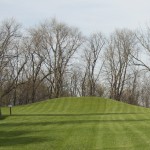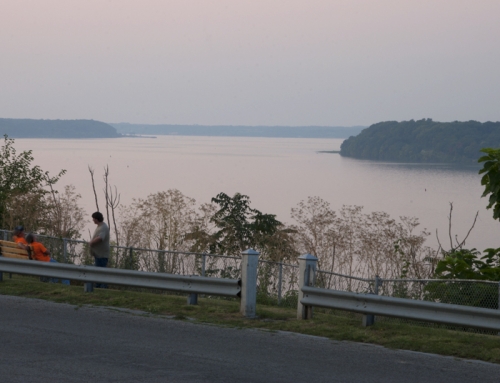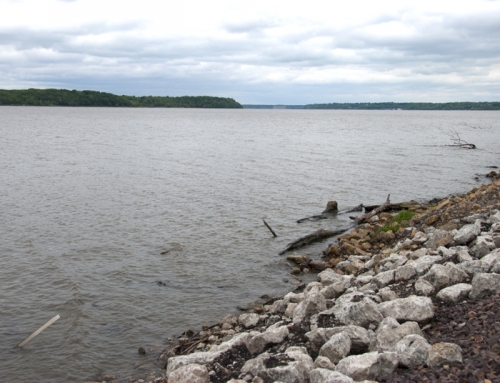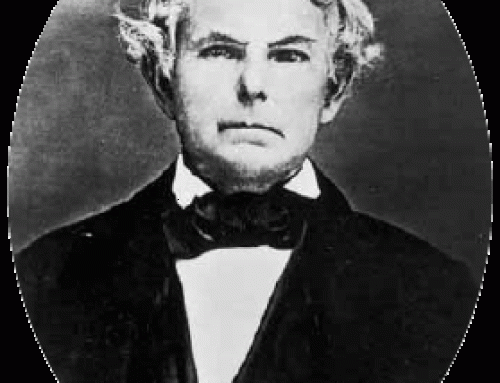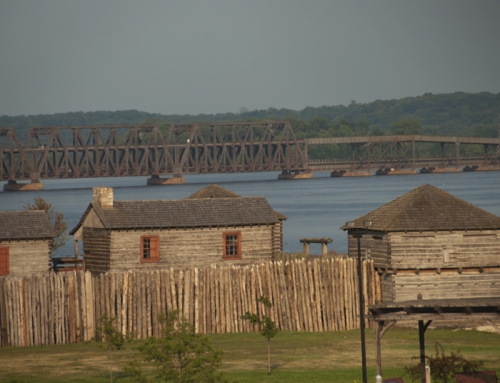History
Toolesboro was the first community established by Europeans in Louisa County. Located near the Iowa River, it was known as Black Hawk before William Toole (there’s the source of your name) laid out the village in 1837 (as Toolesborough), not long after the community’s first post office opened. At its peak, Toolesboro had two distilleries, three mills for grinding corn and one for milling wheat, and several warehouses. You won’t find any of those businesses here today.
Toolesboro might have peaked in 1842, when it hosted what was probably the county’s most impressive wedding. On July 12 Mary L. Staige and Ezra F. Dennison tied the knot under a big old oak in front of 100 guests, all of whom were on horseback. The bride and groom, also on horseback, exchanged their vows, then rode a ferry across the Iowa River for an intimate reception dinner with 500 of their closest friends.
Exploring the Area
Mounds built by Native American cultures were once a common sight along the Mississippi River, but many have been leveled for agriculture or vandalized and looted. At Toolesboro Mounds State Preserve (State Highway 99; (319) 523-8381) a cluster of mounds built about 2,000 years ago during the Middle Woodland period . Many of the mounds started with a single burial but were expanded over time with additional burials. The people who built the mounds probably lived in the general area, somewhere in the rich bottomlands around the confluence of the Iowa and Mississippi Rivers. There would have been an abundance of natural resources that made it an attractive place to live all year. In addition, they would have had access to a wide range of other products available through their trade networks along the Mississippi Valley and other rivers.
The headquarters for the Port Louisa National Wildlife Refuge (10728 Highway X61; 319.523.6982) is located just north of the Toolesboro Mounds; it has a brand new visitors center and an overlook of the river valley.
Getting on the River
The backwaters and channels of the Mississippi River provide rich habitat for birds and fish, and make for some fun paddling opportunities. Much of the river’s territory through this area is protected as part of the Port Louisa National Wildlife Refuge and the Odessa Wildlife Complex. There are several places to put in here (Schafer’s Access, Snively Access, Sand Run Access, Toolesboro Access) where you can explore the backwaters on your own.
The Odessa Water Trail is a group of designated paddling routes of varying length. See the website for maps.
If you didn’t bring a boat with you, River Basin Canoe & Kayak (13038 Highway 61 North; 319-752-1857) can help.
Looking for more places to visit along the Mississippi River? Check out Road Tripping Along the Great River Road, Vol. 1. Click the link above for more. Disclosure: This website may be compensated for linking to other sites or for sales of products we link to.
Where to Sleep
Camping
Snively Campground (9426 County Road X61; 319.523.8381) has 34 sites near the river, some with electricity; no showers.
Where to Go Next
Heading upriver? Check out Muscatine Island.
Heading downriver? Check out Oakville.
Community-supported writing
If you like the content at the Mississippi Valley Traveler, please consider showing your support by making a one-time contribution or by subscribing through Patreon. Book sales don’t fully cover my costs, and I don’t have deep corporate pockets bankrolling my work. I’m a freelance writer bringing you stories about life along the Mississippi River. I need your help to keep this going. Every dollar you contribute makes it possible for me to continue sharing stories about America’s Greatest River!
©Dean Klinkenberg, 2024, 2021, 2018,2013,2011
